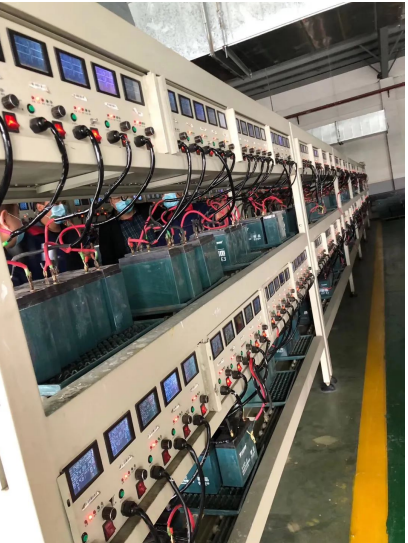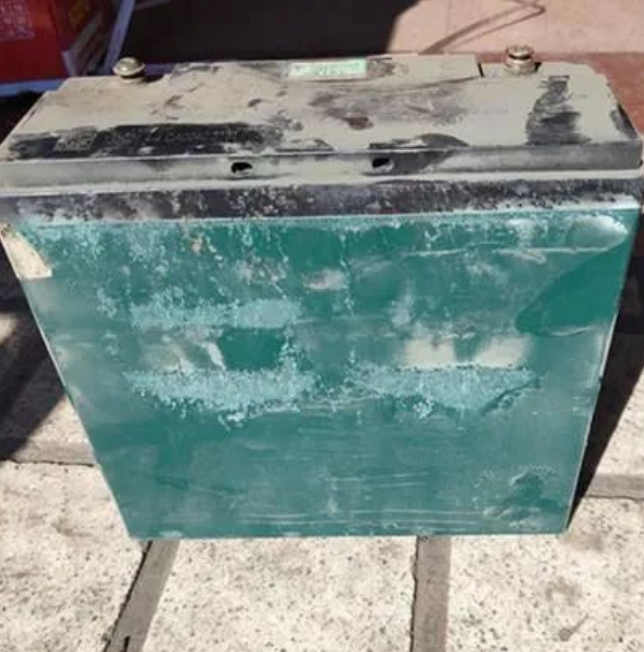Introduction
When the new battery is put into use, it must be charged and discharged regularly. The purpose of charging (Best Way of Charging Lithium Batteries) is to restore the capacity of the battery storage capacity in a timely manner to meet the needs of power equipment. The purpose of discharge is to check the capacity parameters of the battery in time and promote the activation reaction of electrode active substances.
The charging and discharge status of the battery will directly affect the electrical performance and service life of the battery. At present, there are many ways to charge batteries. This Article explains the operating specifications of battery charging. Choosing a scientific and reasonable charging method will greatly improve the maintenance effect of the battery.

1. Before Replenishing the Electricity, Check and Confirm the Appearance of the Battery.
- Check whether the battery has a cracked shell or obvious acid leak‐ age,
- Whether the end column is broken,
- Gently tap the left and right walls of the battery to determine whether the battery is dry.

If any of the above phenomena occur, the battery will not be recharged. Before replenishing electricity, clean the end post and remove the oxidized skin from the surface. Supplement electricity to butter the pole column to prevent electrical corrosion.
Buy Now: Battery Charge & Discharge Cabinet Tester – SI BCDS 75V 40A 4CH
2. Charging Specification
1. Constant Voltage Charging: refers to the charging method where the output voltage of the power supply remains constant during the charging process. Constant voltage 16.0V is recommended (maximum It can exceed 16.2V, and the charging current should not exceed 25A) The charger will charge the battery.
2. Constant Current Charging: refers to the charging method of maintaining the constant power supply output current during the charging process. It is recommended to charge the battery with a charging cur‐ rent = C20/10 (C20 refers to the 20-hour capacity of the battery); if there are multiple (number N) batteries charged in parallel, the charging current = N× (C20/10)
3. Operation Process: operation points and precautions for constant voltage charging and constant current charging:
| Job Flow | What To Do | Cautions |
| Prepare Before Charging | 1. Wear labor protection supplies and prepare all the testing equipment | 1) It is strictly forbidden to reverse or bump during the battery handling process |
| 2. Please make sure that the charger is running normally | 2) Please observe whether the breathable hole is unblocked before charging. If it is blocked, please clean it | |
| 3. Record the battery number and open-circuit voltage of the battery that ne eds to be recharged | ||
| 4. If multiple batteries need to be charged together, divide the batteries to be charged. | ||
| Group, requiring a voltage of more than 12V into a group, and 11V-12V is divided into A group with a voltage of less than 11V is divided into a group. | ||
| Battery Connect Ion | 1. When the battery to be charged is a single battery, it is directly connected to the positive and negative output ends of the charger. | 1) Pay attention to correctly identify the positive and negative electrodes of the battery, so as not to damage to vehicle electrical components caused by batter y polarity charging |
| 2. When multiple batteries need to be charged together, the battery is connected in parallel with cables. (The positive and negative connection s between batteries is required), and then the positive and negative output ends of the charger can be connected to the positive and negative outputs of any battery). | 2) When multiple batteries are charged together, it is strictly for bidden to misconnect the batteries and cause the battery to be short-circuited | |
| Charging | 1. Check whether the connection polarity of the battery is accurate, whether the connection cable is reliable, and there is no false connection phenomenon. | 1) Be sure to cool the battery when the temperature is high. |
| 2. Constant voltage charging: 2.1. After completing the above confirmation work, you can turn on the pow er switch of the charger; adjust the current limit switch and select the appropriate charging current. The charging current of a single battery requires no more than 1/10×C20. | 2) During the charging process, observe from time-to-time whether the charger is in a normal stat e, whether the charging current is consistent with the set current; whether the battery is over heated; and whether there is an abnormal acid spray at the breathable hole; | |
| 2.2 During the charging process, the battery surface temperature shall be measured every 1 hour or the battery temperature shall be felt on the back of the hand. When the battery surface temperature exceeds 50°, the charging shall be suspended or the electric fan shall be used to cool down. The charging can only continue until the battery temperature drops. | 3) If abnormal conditions are found, please disconnect the power immediately and notify the relevant personnel to deal with it | |
| 2.3 When the ammeter display value i s ≤N×1A, charge it for another 3 hours to complete the charging. | ||
| 3. Constant current charging: 3.1. After confirming the work, you can turn on the power switch of the charger. During the charging process, you must measure the battery surface temperature every hour or feel the battery temperature on the back of your hand. When the battery surface temperature exceeds 50°, you must pause charging or use a fan to cool down. You can continue to charge after the battery temperature drops | ||
| 3.2. Charging ends when the battery terminal voltage is ≥ 14.4V | ||
| Charging is complete. | 1. After charging is completed, shut d own, turn off the power switch of the charger, and then remove the connection bar between the batteries | 1) During the operation process, it is strictly forbidden to shorten the positive and negative batter y, resulting in a short circuit of the battery; |
| 2. Detect the status of the battery after charging | 2) It is strictly forbidden to gene rate open fire at the operation site during the charging process. | |
| 3. Mark the fully charged and qualified batteries | ||
| 4. Clean up the work site and work equipment; | ||
| 5. Turn off the power |
Buy Now: Battery Charge & Discharge Cabinet Tester – SI BCDS 75V 20A 8CH
Note: Different capacities and batches of batteries should be charged separately.
Conclusion
The charging process of lithium-ion batteries can be divided into four stages: trickle charge (low-voltage pre charge), constant current charge, constant voltage charge, and charge termination. The basic requirement of a lithium battery charger is a specific charging current and charging voltage to ensure safe battery charging.
More Articles:
Analyze Common Bulging Reasons for Lithium Batteries,
Aging of NCA Lithium Batteries,
Function and Components of Battery Pack & BMS,
Cell BMS Pack Failure Analysis,
Key Points of Lithium-Ion Battery Production Process Control,
Lithium Battery Protection Board,
Basic Knowledge of Lithium-ion Battery Commercialization,
Action protector in electric vehicle charging system,
Production problems of lithium batteries,
How the Three Electrode System Works,
Electric Vehicle Maintenance Practical Dry Goods,

